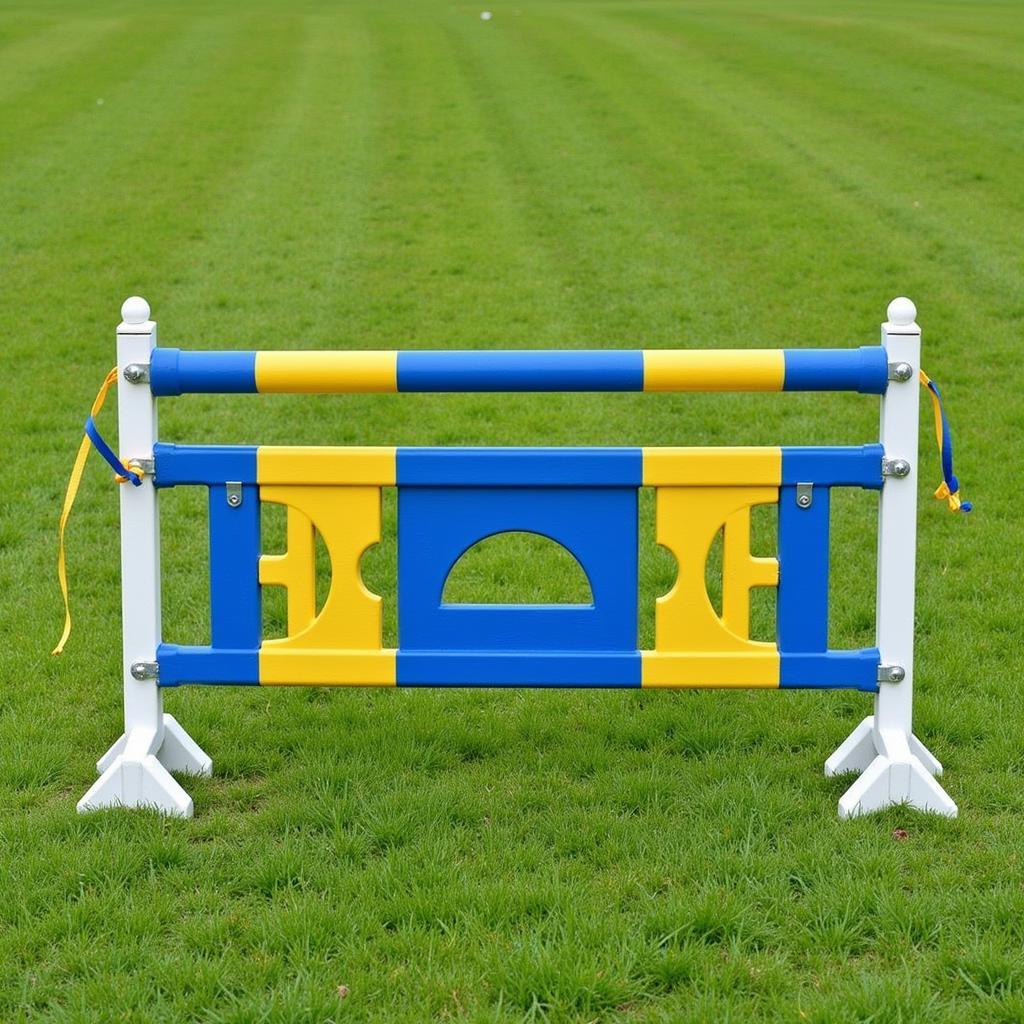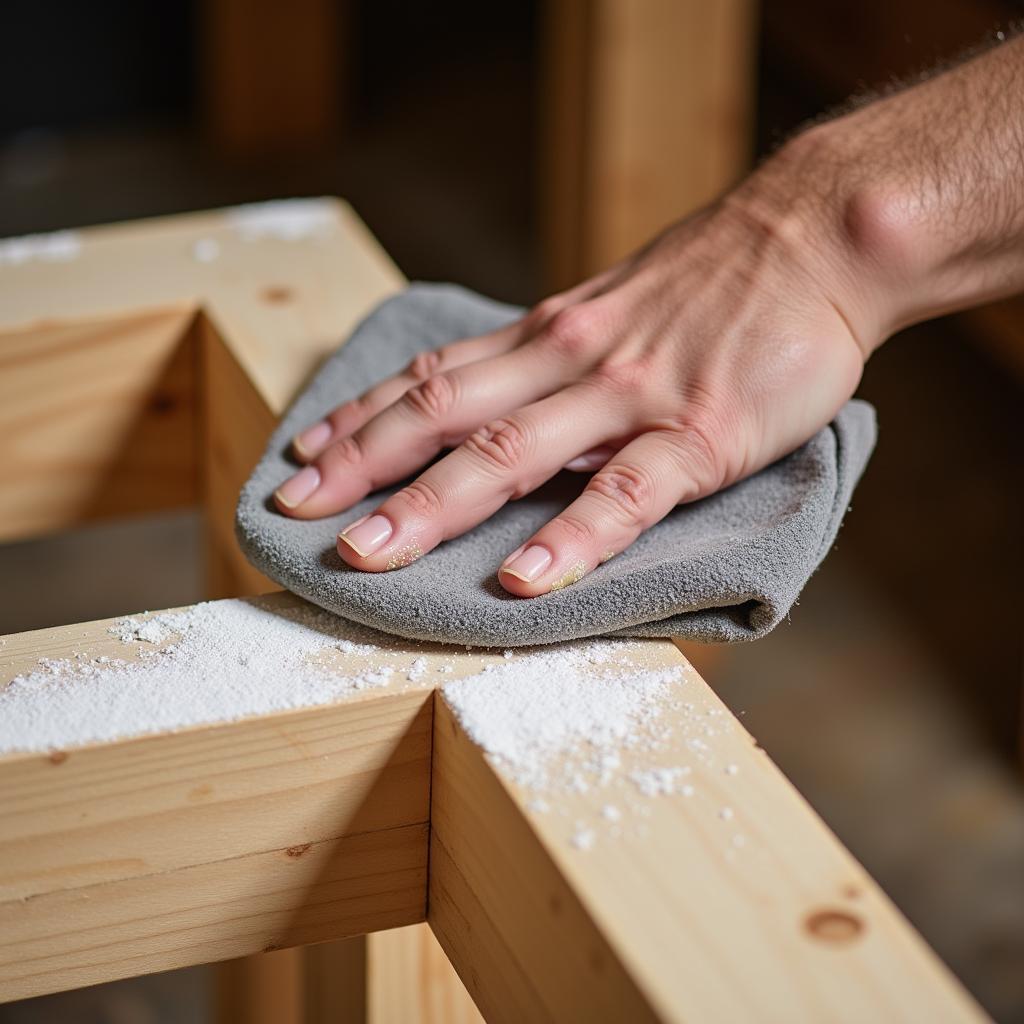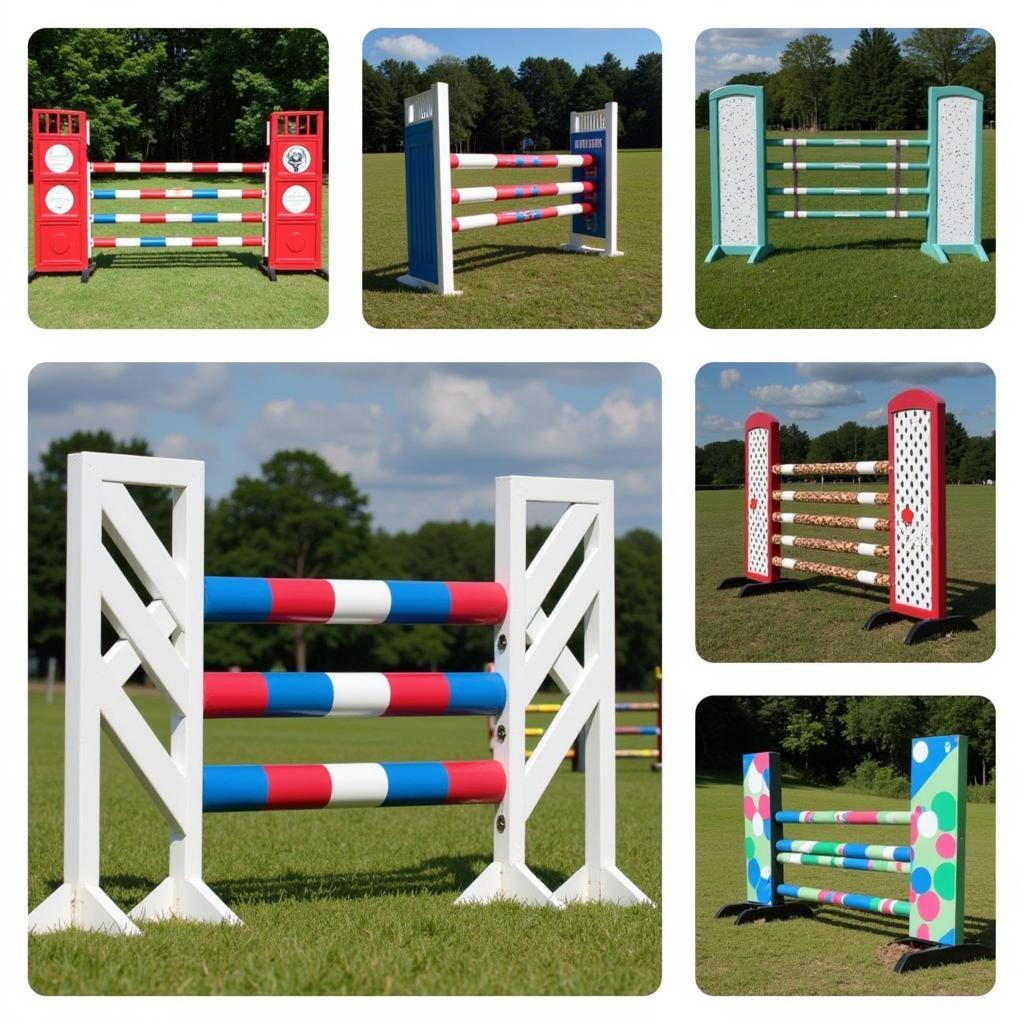Painting Horse Jumps is about more than just aesthetics; it’s about safety, longevity, and creating an engaging environment for both horse and rider. Whether you’re refreshing faded jumps or aiming for a whole new look, this guide will walk you through choosing the right paint, prepping your jumps, and achieving a professional finish that will last.
Why is Painting Horse Jumps Important?
 Horse jump painted in bright colors for enhanced visibility
Horse jump painted in bright colors for enhanced visibility
A fresh coat of paint does wonders for your horse jumps, and not just visually. Here’s why it’s crucial:
- Enhanced Visibility: Bright, contrasting colors make the jumps easily discernible for your horse, even in varying light conditions. This is vital for their safety, especially at speed.
- Increased Longevity: Paint acts as a protective layer against the elements, preventing rot, water damage, and general wear and tear, making your jumps last longer.
- Improved Aesthetics: A well-maintained arena with vibrant jumps elevates the overall look of your space, creating a more inviting atmosphere for training and competition.
Choosing the Right Paint for Horse Jumps
Selecting the right paint is paramount for both the durability of your jumps and the safety of your horse. Opt for paints specifically formulated for exterior use on wood or metal, depending on your jump material. Here’s what to consider:
- Durability: Look for paints that are weather-resistant, fade-resistant, and chip-resistant to withstand outdoor conditions and regular use.
- Safety: Choose low-VOC or zero-VOC paints to minimize harmful fumes during application and ensure a safe environment for your horse once dry.
- Finish: Consider the desired look – a high-gloss finish is easier to clean, while a satin or semi-gloss finish offers a less reflective surface.
Expert Tip: “Always prioritize safety when choosing paint for horse jumps. Opt for non-toxic, low-VOC options to protect both your horses and the environment,” advises Sarah Thompson, an equine veterinarian with over 15 years of experience.
Prepping Your Horse Jumps for Painting
 Preparing a horse jump for a fresh coat of paint
Preparing a horse jump for a fresh coat of paint
Proper preparation is key for a smooth and long-lasting paint job. Follow these steps:
- Cleaning: Thoroughly clean the jump surface with a stiff brush, soap, and water to remove dirt, cobwebs, and loose paint. Allow it to dry completely.
- Sanding: Smooth out any rough edges, imperfections, and peeling paint with sandpaper. This creates a better surface for the paint to adhere to.
- Priming: Apply a quality primer, especially to bare wood, to create an even base for paint application and enhance adhesion.
- Taping: Use painter’s tape to mask off any areas you don’t want to paint, such as hardware or specific design elements.
Painting Techniques for Horse Jumps
Applying the paint correctly ensures even coverage and a professional-looking finish:
- Choose Your Weapon: A brush is ideal for intricate designs and corners, while a roller offers faster coverage for larger, flat surfaces.
- Thin Coats: Apply multiple thin coats of paint instead of one thick coat, allowing sufficient drying time between each layer.
- Follow the Grain: For wooden jumps, paint in the direction of the wood grain for a smoother finish.
- Don’t Forget the Details: Pay attention to edges, corners, and any intricate designs for a polished look.
Creative Horse Jump Painting Ideas
 Colorful and creative horse jump designs
Colorful and creative horse jump designs
Beyond solid colors, there are endless possibilities to make your jumps visually appealing:
- Stripes: Classic and eye-catching, vertical or horizontal stripes in contrasting colors enhance visibility.
- Polka Dots: Playful and fun, polka dots of different sizes can add a touch of whimsy to your arena.
- Geometric Shapes: Bold and modern, geometric patterns like chevrons or squares create a contemporary feel.
- Stencils: Use stencils to create intricate designs, logos, or numbers on your jumps.
Expert Insight: “Don’t be afraid to get creative with your jump designs! Engaging visuals can make training more stimulating for both horse and rider,” shares Mark Williams, a renowned horse trainer and course designer.
Conclusion
Painting your horse jumps is a worthwhile investment that enhances safety, promotes longevity, and adds a touch of personality to your equestrian space. By choosing the right materials, preparing meticulously, and employing proper painting techniques, you can create visually stunning and durable obstacles that will elevate your training experience. Remember, a well-maintained arena reflects the care and dedication you have for your horses and your sport.
Need Help with Your Horse Jumps?
Contact Justus Horses USA at 0772127271 or email us at [email protected]. Our team of experts is available 24/7 to answer your questions and assist with all your equestrian needs. You can also visit us at QGM2+WX2, Vị Trung, Vị Thuỷ, Hậu Giang, Việt Nam.